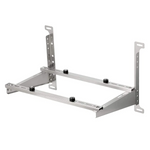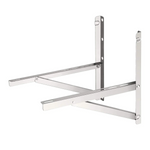If you’ve ever walked into a large living room, office, or commercial space and noticed a sleek, vertical appliance humming quietly in the corner, chances are you’ve encountered a floor-standing air conditioner. While split units and central HVAC systems dominate the American market, this type of AC is a popular solution elsewhere for specific needs. Let’s break down what it is, how it works, and why it might be the perfect fit for your cooling needs.
What Is a Floor-Standing Air Conditioner?
A floor-standing air conditioner, also called a cabinet or console AC, is a self-contained cooling unit designed to stand vertically on the floor. Unlike window units that require mounting or central systems that need ductwork, these appliances are freestanding and often portable, making them ideal for spaces where permanent installation isn’t practical.
Visually, they resemble a tall, narrow cabinet (typically 2–3 feet wide and 5–6 feet tall) with vents and controls positioned for easy access. Many modern models feature sleek designs to blend into home or office decor

Why Was It Designed?
Floor-standing air conditioners, also known as vertical air conditioners, are not a new concept. They have long been a staple in markets like Europe and Asia, where space efficiency and flexibility are top priorities. Unlike traditional window or wall-mounted units, floor-standing models offer a unique set of benefits that make them ideal for a variety of settings.
One of the primary advantages of a floor-standing unit is its installation flexibility. These air conditioners don’t require mounting on a wall or window, which means you can place them in areas where traditional units might not fit or be feasible.
For example, if you live in a building with limited wall space for a mini split or cannot install a window unit, a floor-standing model provides a simple, effective solution. Additionally, their sleek vertical design saves space while still offering powerful performance, making them a great choice for modern homes, offices, and commercial spaces.
To sum up,this type of AC addresses several key challenges:
- Large Space Cooling: Designed for rooms where wall-mounted or window units lack sufficient power, floor-standing models deliver stronger airflow and higher cooling capacity (often 7–24 kW). They’re common in living rooms, conference halls, or open-plan offices.
- Installation Flexibility: Perfect for older buildings without ductwork or renters who can’t modify structures. Some industrial versions even come with wheels for mobility.
- Air Quality Control: Many include advanced filters and dehumidifiers to purify air—a boon for allergy sufferers or humid climates.
Where Are They Used?
The Floor-Standing Air Conditioner is perfect for a wide range of environments. Residential users can enjoy a comfortable home climate all year long, while business owners can keep their customers and employees comfortable in various commercial spaces. The unit's sleek and stylish design fits seamlessly into modern interiors, providing a sophisticated air conditioning solution that complements any décor.
- Residential: Ideal for large living areas or homes without central HVAC.
- Commercial: Offices, retail stores, and server rooms benefit from their robust cooling and air purification.
- Industrial and Emergency Use: Portable industrial models cool temporary setups like field hospitals or event tents.

While less common in the U.S., brands like TOSOT, LG, Haier (via Casarte), and Midea offer stylish and efficient models worldwide. TOSOT is bringing this innovative air conditioning alternative to the U.S. market soon—stay tuned for updates! If you have any questions or want to learn more, feel free to reach out.
In summary, floor-standing air conditioners are versatile, powerful, and designed for spaces where traditional systems fall short. Whether for a cozy home or a bustling workspace, they deliver comfort with minimal hassle. Next time you see one, you’ll know it’s more than just a fancy cabinet—it’s a climate control powerhouse!





